While it is a standard in most European countries, in the Netherlands it always remains a big surprise: "Will we get snow and ice, or will it be a bad winter". Either way, it is important to be well prepared for what's to come. That way, you can take full advantage of a beautiful winter period without any worries.
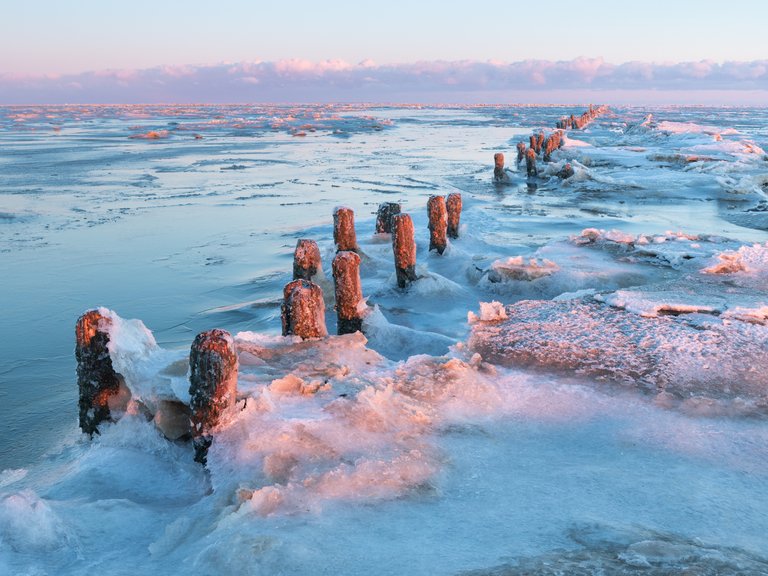
Photographing in extreme winter weather can produce incredible and unique images, but it is a major challenge. Both logistically and technically; How do you protect your gear and yourself? How do you make sure you don't get too cold? How do you change a lens during a snow or rain shower? How do you get the best exposure? There are many factors to consider, both for your own well-being and that of the camera. In this article, we will discuss this in detail!
Protect yourself
Before we start talking about photography, it's important to focus on protecting yourself first. This is something you should not underestimate. As soon as you get cold, your concentration decreases. This is at the expense of the result, but above all of the fun. That is a shame, because with the right clothing and preparation you do not have to get cold at all.Clothing
It is wise to wear several layers of clothing, because that way, you can always take something off. You should prevent sweating. Because as soon as you stop to take a picture, this sweat cools off and you'll become cold. Start with a tight-fitting (thermo) shirt. A sweater or windstopper over it. Finally, a warm (down)jacket. Wear leggings or long thermal underwear under your pants. Or, wear snowboard pants if you have them.Hat and gloves
You lose a lot of heat through your head, especially when your bold like me. Therefore, always wear a hat. Gloves are important too. Cold fingers can seriously spoil the photography pleasure. There are special photography gloves, but they are expensive and often not very good. The best gloves are winter sports gloves. They are nice and warm and usually waterproof. Winter cycling gloves by Triban (Decathlon) are recommended when setting the camera; Inexpensive, warm, water-resistant and touchscreen compatible!Shoes and socks
The ground is usually very cold during winter. Especially when there is snow. That is why good footwear is of great importance. Hiking boots and warm socks are best! Make sure that the shoes are not too tight (for example because of too thick socks) because that will give you cold feet. Once you get cold feet, the rest of your body quickly follows.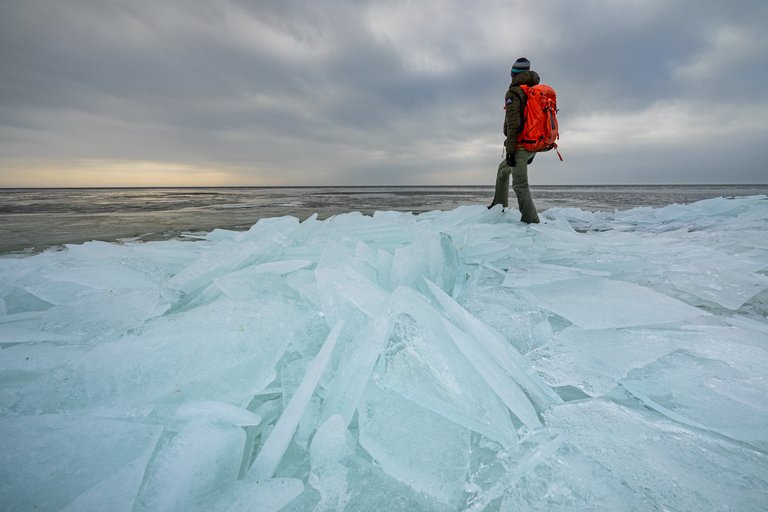
Protect your gear
Nowadays, most cameras and lenses have good weather sealing. When in doubt, you can consult the user manual. It is also important to use common sense. An important rule applies to shooting in the winter: Allow the camera to warm up for about an hour before taking it out of the bag indoors. If you do this earlier, you have a great chance of condensation on and in the camera, which can lead to damage to the electronics inside!Don't worry too much about using your camera in rain or wet snow, but going on too long (hours) is not good of course. What helps during a rain or wet snow, is to put a lens cloth or towel over the body and lens. This way you can continue shooting without it getting too wet. It sounds like an open door, but don't change lenses and dry the camera well afterwards. Also check that the inside of the camera bag is dry and, allow the camera to air dry for a few hours (after it has acclimatised).
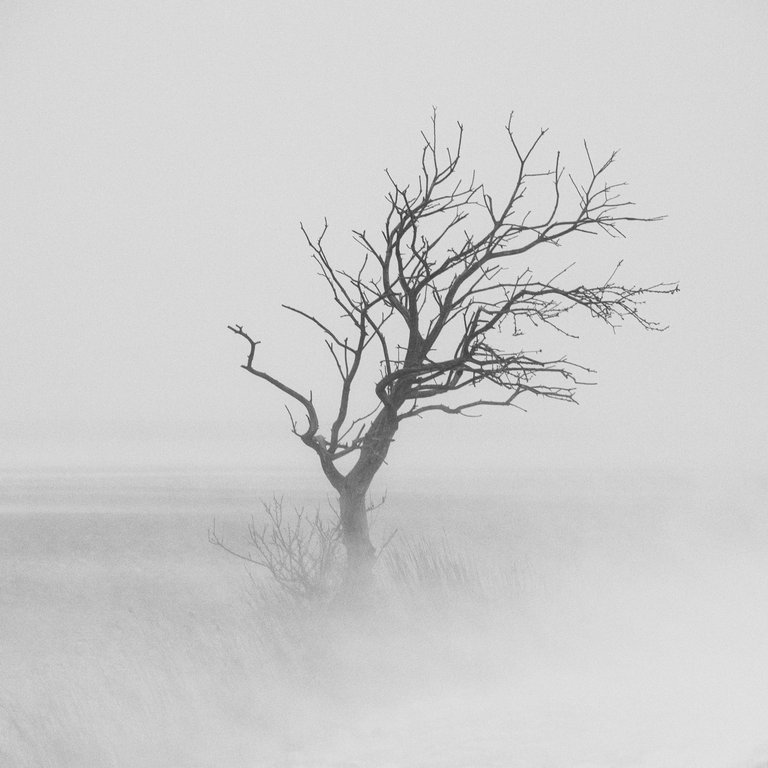
Switching lenses
Think about which lens you want to shoot with while still at home. In the unlikely event that you have to change a lens, do this under your jacket, with your back towards the wind and the lens opening (in the body) down. Avoid breathing into the body or on the lens. It takes some practice (which you can do at home) but this works even under the most extreme conditions. When the camera and lens have become wet, it is better not to change lenses anymore. The risk of water getting inside the camera is now too big. If a drop of water falls into the body, don't panic and don't try to clean it yourself, but have it professionally cleaned at the camera store.
Batteries
When it is freezing cold, the battery life can be drastically reduced. Always take one or two spare batteries with you, and wear them on your body. If you end up with empty batteries, it helps to remove the battery from the camera and warm it up under your armpit. Usually, this will give you an additional shooting time of half an hour.Tripod
When shooting in extreme winter weather, a sturdy tripod is indispensable. I've experienced a situation me and a friend had to hold on to the tripod to keep it in balance. The photo turned out wonderfully! If there is a thick layer of snow, press the tripod down firmly. This prevents it from sinking and falling over.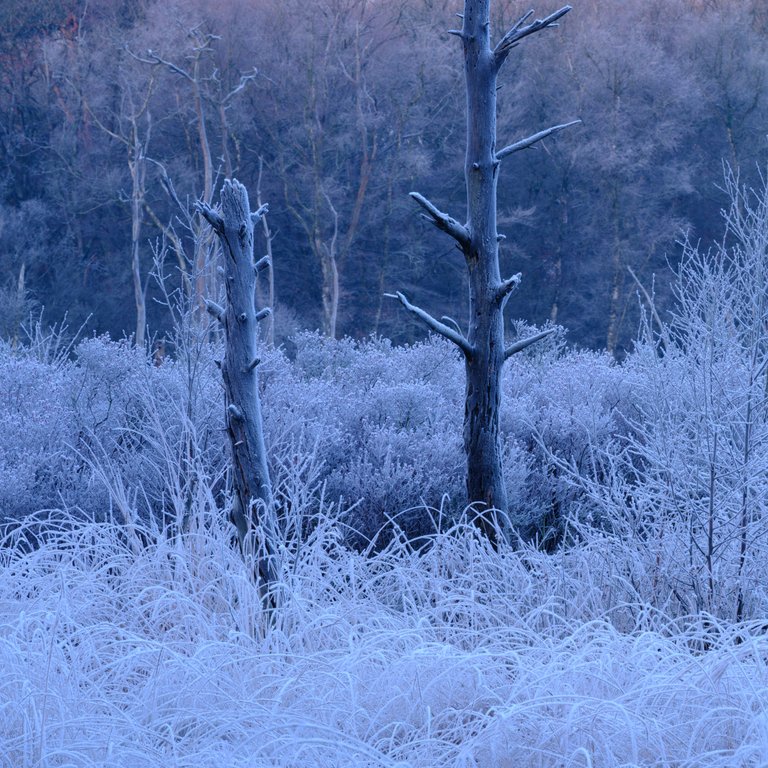
Types of winter weather
In the Netherlands, unfortunately, there is no real winter like there used to be, but we still have short periods of cold and snow. To make full use of these periods, we give a number of examples of weather types that we can expect in the Netherlands.Heavy snowfall
It's fantastic to be outside during heavy snowfall. Slowly but surely the world around you changes, and details disappear under a thick white blanket. These are the perfect conditions for minimalist photography. By playing with your shutter speed, you can freeze or smear the flakes. A lens hood can help prevent snow from getting on the lens. If it does, use a blower to blow it away. Do not do this with your mouth, as the moisture in your breath can freeze on the lens. Be careful where you walk! Footsteps can completely ruin your photo. Go early, because then the chance of virgin snow is the biggest. If there is a lot of snow, it is also nice to be in the forest. The snow covers the chaos that normally makes photographing in the forest so difficult!Experiment with macro photography during a snow shower; Snowflakes are extremely photogenic! Or make beautiful winter portraits. Playing animals can be a fantastic subject too! Let your creativity run wild and above all: Enjoy!
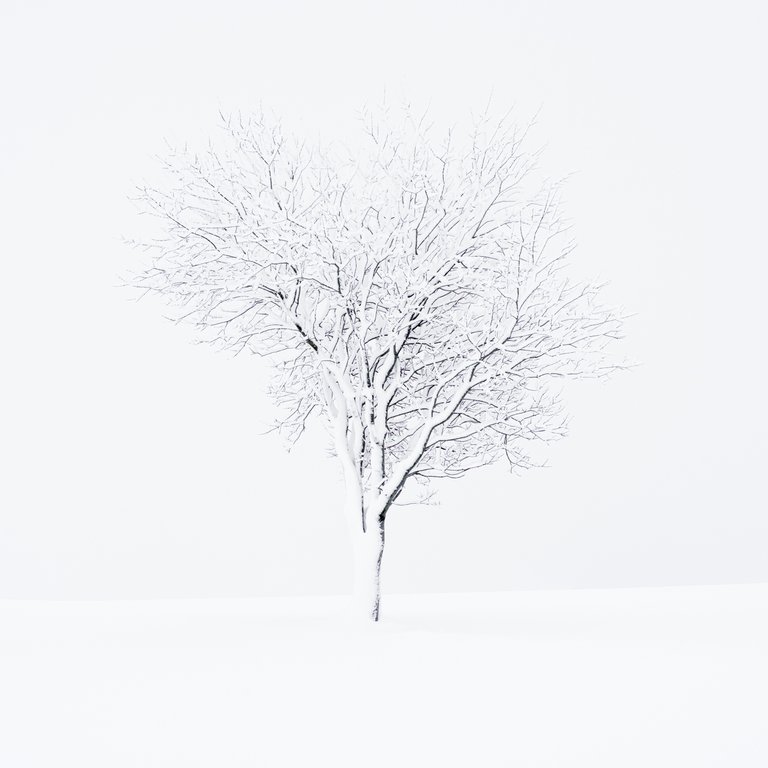
Blizzard
A blizzard is a combination of heavy snowfall and wind force 8 or more. Perhaps the most challenging and potentially dangerous situation in winter. If all this succeeds, you are assured of an ultimate winter image. For your own safety, never go out alone during a snow storm, and besides, you can use that extra help to keep your tripod stable. Avoid forests due to falling branches and don't get too close to the surf on the beach. Dunes, sandy plains and meadows with solitary trees are fantastic during a snow storm.In a blizzard, put the tripod as wide as possible. Hang the camera bag underneath for extra stability. Avoid using the center column. This creates instability that can cause it to fall over. In addition, a center column causes vibration, which creates the risk of blurry photos. Use a fast shutter speed of at least 1/200 to avoid motion blur. Finally, it is advisable to use your body as a windshield while taking the photo.
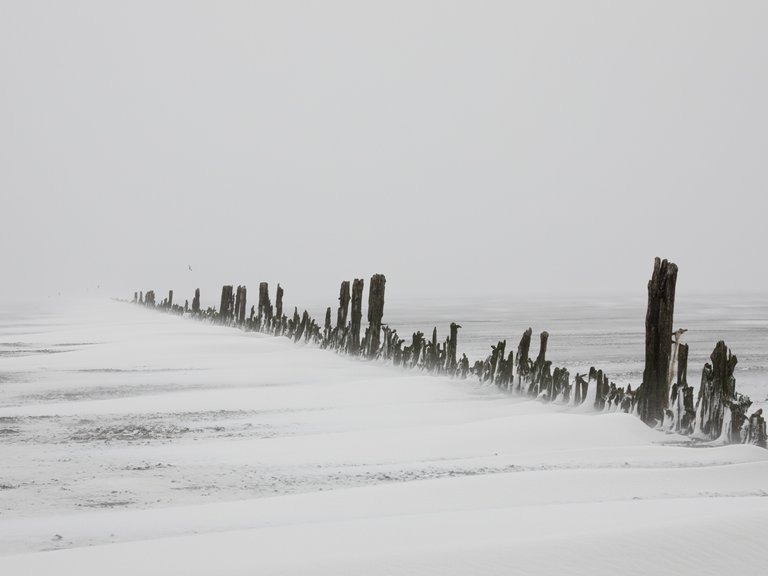
Wet snow
Not the best situation, but it can create beautiful conditions. Wet snow temporarily sticks to any surface. This can give a nice effect when photographing trees or buildings. Often, there is wind during a wet snow shower. If you photograph this with a slightly slower shutter speed (for example ⅙ second), the dramatic effect of the falling snow is enhanced. This can be very nice when shooting homogeneous trees (such as a forest edge). The snow contrasts with the dark trunks.Freezing fog and frost
When it is foggy when the frost sets in, a true dream landscape is created! The supercooled mist droplets adhere to any surface. Especially forest areas become very beautiful. But, the local city park is also perfect. Get out well before sunrise! The cold white ice contrasts very nicely against the blue-pink sky. Once the sun has risen, the ice deposit quickly melts.
Glazed frost
Super dangerous, but sometimes very beautiful! Glazed frost makes for slippery roads, but the frozen water can create spectacular shapes on branches and leaves. Be careful and never drive without winter tires. If you don't want to hit the road at all: You can shoot beautiful details in your own backyard. Think of autumn leaves lying on the ground or shrubs covered with ice.Ice and drifting ice
If it freezes long enough, a thick layer of ice forms. Beautiful detail shots can be made of this. Think of bubbles in the ice, or trapped leaves. Landscape photos provide nostalgia. Nothing reminds us more of a Dutch winter than a ice-skater or children sledding and having fun. Be careful and never step on the ice if you are alone!When, after a long period of frost, the thaw sets in and there is a strong breeze, then drifting ice is formed. This accumulation of ice blocks provides a wonderful backdrop for the landscape photographer.
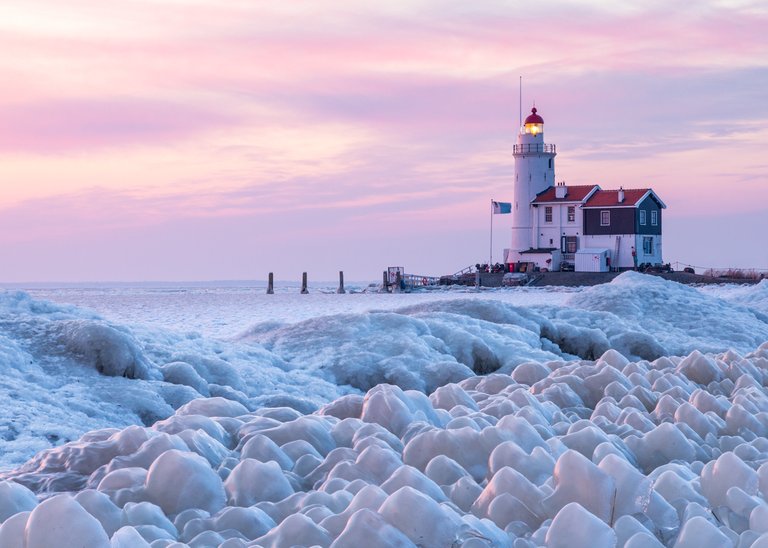
Predicting the weather
To know whether or not we get any of the aforementioned weather types, we need to look at the weather forecast. It is important to know what to look out for. For dry snow you need precipitation and a temperature below zero. For a blizzard, you need snow and strong wind (+8 Bft). You get wet snow when it is 0 degrees, or just above. If you want to know whether it will be foggy, look at the humidity: If it is 100% and the temperature drops below zero during the night, there is a high chance of (frozen) fog.Apps
There are numerous great apps available for predicting the weather. The first is WeatherPro. A versatile app that has a free and paid version. The paid version provides hourly information such as the amount of sun, precipitation in millimeters, humidity and temperature. The free version every 3 hours. In addition, Buienradar (Dutch, but any weather radar works) is great for predicting showers. The apps Ventusky and Clear Outside are ideal for determining the cloud cover and help you predict whether a beautiful sunrise or sunset will occur.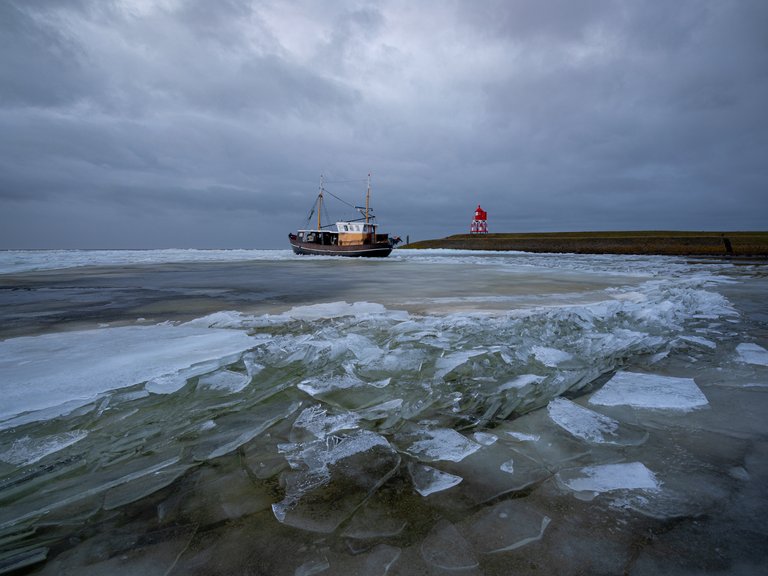
Camera Settings
RAW
For best results, set the camera to RAW. This gives you the biggest margin for possible corrections during post-processing.White balance
When shooting in snow, white balance is very important. Do not leave this on automatic, but use a fixed value. The best starting point for white balance is "shadow" or about 6000 Kelvin. Check via live view whether this produces a satisfactory result and adjust where necessary. If necessary, the white balance can be corrected afterwards in Lightroom. Keep in mind that with a clear sky, the snow is always a bit blue because it reflects the color of the sky Snow on which the rising sun shines is orange/pink, never use the automatic white balance because it corrects for this and you lose color (warmth).Aperture, Shutter speed and ISO value
You can shoot in automatic mode, but you have the most control in manual or aperture priority mode. For the best sharpness over the entire range, use an aperture between f/9 and f/11. Keep the ISO value as low as possible. You then determine the shutter speed using live view and the histogram.Histogram
The histogram is an accurate representation of the exposure. It is a bar chart that runs from black to white. It seems complicated, but the application is simple. When peaking to the left, image information disappears in black. When peaking to the right, image information disappears in white. The shape of the histogram depends on the subject and the amount of light or dark elements. With snow you have to deal with mainly white parts. So the peak of the histogram will be more to the right. Pay attention to this, because if the peak is in the middle, the snow is medium gray and therefore underexposed. If the peak is against the right edge, the snow will get bitten and you will lose details.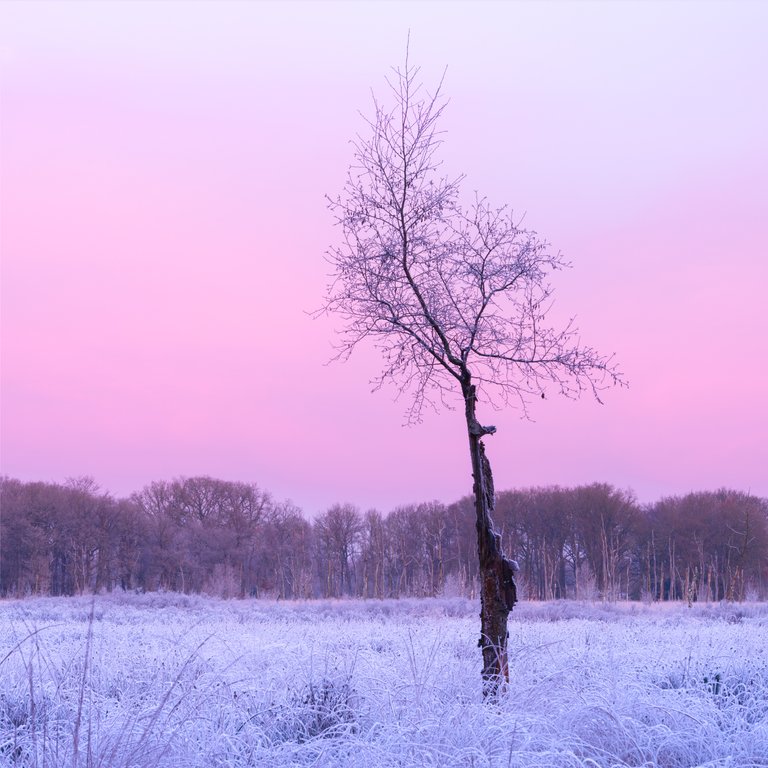
Thanks very much!! Always try my best!
I really can not take risks in very cold weather, but not for myself, because of the camera and more equipment. But snow and ice photography is really a great experience. Good friend dear
Amazing pictures.. Especially lighthouse 😍😍 Thank you so much for sharing 👏👏
Thanks so much!! The shot of the lighthouse is one of my favorites to date... man it was blistering cold! -12 and gale force wind coming from the east...hence the beast from the east.
-12+wind its luke - 20 🙈 awfull.. But.. You got amazing picture.. Well done. I know in Croatia sometimes can be - 26 so definitely I know what are you taking about
-26 in croatia? That must be inland right?
Yeah.. It happened 3 times in my lifetime 🙈😳 and it was freezing. Mostly is from - 5 till - 18
That is crazy! It doesn't get that cold in the Netherlands anymore. I did a long time ago, but now it is mostly above 0 unfortunately.
Im not in Croatia for almost 5 years now.. But how my friends are telling me this winter they had - 8. But in Ireland it was - 2 at night.. I'm glad I escaped from winter time 🙈🙈 At least I don't need to clear up the snow
Absolutely no possibility of snow where I am, but totally learned a lot, and enjoyed the photos thoroughly! Thank you.
Nope Malaysia is quite warm indeed :-) have you ever been in the snow yet? Thanks for the nice compliment!
Lol, warm is an understatement! 😁 It's either hot or rain here! Nope, not had the pleasure of meeting snow yet... Look forward to that one day 😊
You're very welcome!
hehehe not too much to choose from hahaha. I was in Vietnam and I guess the climate in Malaysia is more or less the same right? I hope you will see snow once! You could do a Europa trip to Iceland or Switzerland for instance!
Awesome pictures!! Thanks for sharing!
Thanks very much!! Loved to write it!
!PIZZA
Thanks very much!
Great series and very interesting read too! Thanks for sharing!
Die plaat van het Paard van Marken is echt een fantastisch shot!
Dankjewel Thijs! Man wat was het mooi op die dag. Het was 2018 toen de Russische beer in ons land was. De keiharde wind en kou maakte deze mooie sculpturen. Ik geloof dat het -12 was met windkracht 7... het was echt ontzettend koud en er was maar een kleine kans op mooi licht. Het roze licht was er maar heel even en nog voordat het er druk werd. Toen was ik al weer op weg naar huis :-D
Als ik dat zo lees moet het fantastisch zijn geweest! Zeker als je de kou trotseert voor een kleine kans van slagen is de beloning extra groot. Al helemaal als je het net voor de neus van de grote groep wegpikt. 😅👍
Yes het was ongelooflijk mooi. Ik moest er ook dik 2 uren voor rijden dus het was echt een ware traktatie! Het was echt nog donker toen ik daar kwam en had alle tijd om een mooie compositie te zoeken. Toen ik vertrok had ik een enorme smile op mijn gezicht!
Hahaha, dat zijn de mooiste! Ik ja het me goed voorstellen. Zelf ook wel eens vergelijkbare situaties gehad. Echt genieten!
Beautiful pic's Bro
Thanks very much mate!! Much appreciated!
Congratulations @harmenpiekema! You have completed the following achievement on the Hive blockchain and have been rewarded with new badge(s):
Your next target is to reach 4750 upvotes.
Your next target is to reach 300 replies.
You can view your badges on your board and compare yourself to others in the Ranking
If you no longer want to receive notifications, reply to this comment with the word
STOPCheck out the last post from @hivebuzz:
Glad to hear!
Yes it is @harmenpiekema 😊👍
Enhorabuena. Has recibido apoyo
The Creative Coin Fund.
Únete al servidor de Creative Coin y comparte tus publicaciones.
Congratulations. You have received support from
The Creative Coin Fund.
Join the Creative Coin server and share your posts.
Selección manual de @elemarg25
Image by barbara-orenya
Thanks very much!! Cool picture too :-D
You got some really 'cool' shots here! Pun fully intended. hahaha
hahahaha Thanks a lot mate!! It was quite cool indeed ;-)
:-D
Dang... now that is ice cold... Hivemazing!
Rawr!
:-D :-D :-D I love em cold!
Welcome this winter,,,,looks like Kashmir feelings,,,
Keep supporting us too
Thanks very much!! Winter is awesome!
PIZZA Holders sent $PIZZA tips in this post's comments:
@ravenmus1c(6/15) tipped @harmenpiekema (x1)
Please vote for pizza.witness!
Always love a good pizza!
Dat is een moois stuk man! Maar lens opening naar beneden als je gaat lens wisselen, heb je dan niet liever je camera opening naar beneden?
Dankjewel kerel!! Leuk om te lezen. Ik had dit initieel voor zoom geschreven en voor mijn website een vertaling gemaakt. Met lensopening bedoel ik ook de camera opening... dat is de plek waar de lens in gaat. Eerder had ik inderdaad de body naar beneden maar toen vroeg iemand zich af wat ik daar mee bedoelde... ik zal even kijken of ik het nog iets duidelijker neer kan zetten.
Haha, oja op z'n mannier! Dan kan je met de camera naar beneden gericht of zo. Nou je blijft bezig denk ik dan :p
Ja idd, het is maar net hoe je het interpreteert. Heb er nu een stukje tussen haakjes aan toe gevoegd :-D
Zet ik je weer aan het werk 🙈
Thanks for sharing camera setting for taking a beautiful photos. Often we don't know about perfect camera setting. Stay blessed.
Your content has been voted as a part of Encouragement program. Keep up the good work!
Use Ecency daily to boost your growth on platform!
Support Ecency
Vote for new Proposal
Delegate HP and earn more
Thanks very much!
Beautiful work and you have also put up a great road map in shooting out in the cold. Something I may never experience in this lifetime but who knows what life may bring. Cheers!